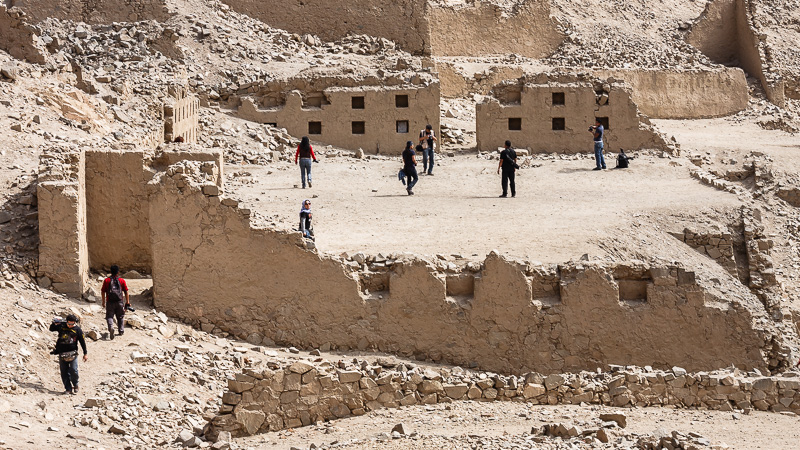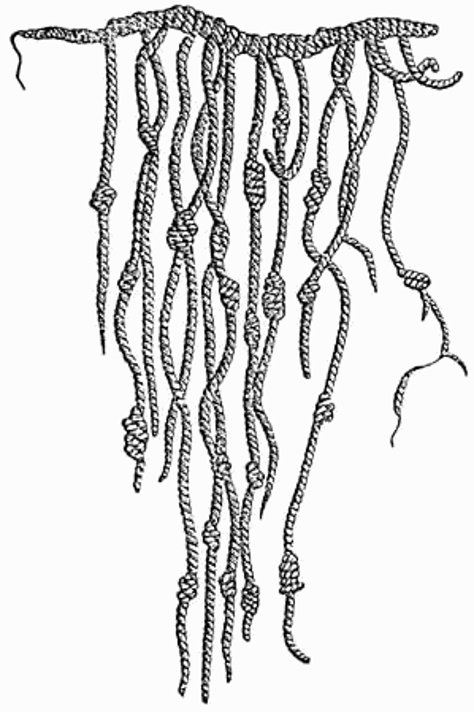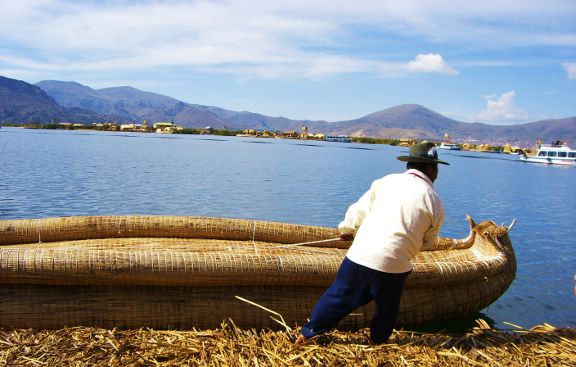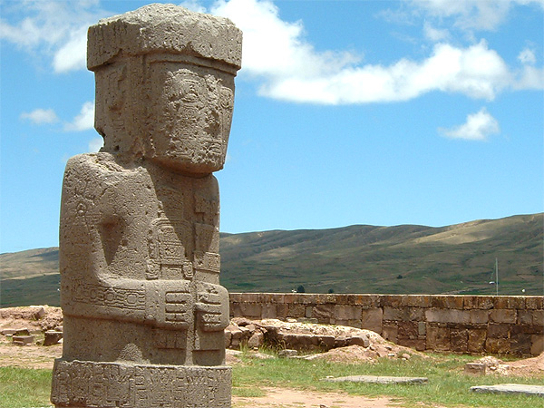Quipu, the Inca Writing System

Incahuasi, Peru. This large Inca complex is near Lima, Peru. In 2014, a number of well-reserved quipu were found at this archeological site. The photo is credited to Enrique Jara. It is used under a Creative Commons Attribution-Share Alike 4.0 International license. Wikimedia Commons.
For many years anthropologists were confronted with a puzzle about Inca civilization. Conventionally, civilizations have in common certain characteristics. One of these is a system of writing. However, it did not seem the Inca had a system. This was perplexing, because in every other respect their civilization matched the sophistication of other ancient societies. Eventually, archeological discoveries led researchers to reconsider their idea about what the Inca writing system might look like. The new perspective brought with it the realization that the Inca did have a system of communication that was akin to writing, but different.
The Inca, it appears, did have an a systematic method of preserving and transmitting information. Their method, called quipu (or khipu), involved the use of fibers, or even hairs, that were knotted in a very particular way. By "reading" quipu, important personages in the far-flung Inca Empire were able to communicate with each other.
Deciphering quipu, however, was a challenge for modern linguists. Then, in 2017, there was a possible breakthrough. A February 2018 article in Innovation House describes how a recent "find" may be the Rosetta Stone of Inca communication. A quipu was discovered that seems to be an exact translation of a Spanish document discovered earlier. If this turns out to be true, linguists may have a link between quipu and modern languages.

This picture is taken from an 1888 German Encyclopedia, "Meyers Konversationslexikon". The copyright on this book as expired so the picture is in the public domain.
In order to understand why the Inca turned to knots rather than to a stylus to record information, it's important to know the value placed on weaving and textiles in their society. Weaving was an essential skill. Textiles in Inca society held a value comparable to gold and silver in European society. The Inca wove boats from reeds, armor from cloth and leather, and bridges from vegetable fibers. Considering the high value placed on weaving and textiles, it was logical for the Inca to use this material in their communication.

This picture shows a man pulling a reed boat on Lake Titicaca, in Peru. The image is credited to Tuvas at English Wikipedia. The picture is used under a Creative Commons Attribution-Share Alike 3.0 Unported license. Wikimedia Commons.
When the Spanish first landed in Peru, they learned about quipu and understood this was a form of record-keeping essential to Inca communication. According to some sources the Spanish burned quipu in great numbers when they realized these contained a record of their misdeeds. The Inca record contradicted what the Spanish had written about themselves. Because of the deliberate destruction by the Spanish, not many quipu survived. In all, there are less than 1000 known to exist, although more are found every year. Some quipu are preserved as treasures in Peru. Some are kept in museums outside of Peru.
The earliest impression of quipu by archeologists was that this was a sort of abacus, an accounting system. In 1981, Marcia Asher and her husband, Robert, published a book that challenged this view. Marcia was a mathematician and Robert was an anthropologist. Together they examined quipu and concluded in their book, Mathematics of the Incas: Code of the Quipu that the Inca "developed a...system...of "spatial arrays"" that were used to record and transmit information. The Inca Empire sprawled over thousands of miles and encompassed diverse populations, perhaps as many as 10,000,000 people. In order to govern effectively, there had to be a system of communication and administration.
_p360%20Felipe%20Guaman%20Poma%20de%20Ayala%201615.jpg)
This picture was drawn in 1615 by an indigenous Incan historian, Felipe Guaman Poma de Ayala. In the picture, an Incan woman is holding a quipu. In the lower right hand corner of the picture is a calculating devise called Yupana. The picture is in the public domain because of its age.
Recent interpretation of quipu suggests that not only the placement of knots but the direction of weave, colors and fiber chosen were significant. It seems that not every Inca could read quipu. There was a special class of person, a scholar, or shaman, who preserved and interpreted quipu. These elevated personages were called "quipucamayus".

This Tiwanaku statue is from a civilization that existed before the Inca civilization arose. It is believed by some archeologists that quipu may have originated with the Tiwanaku. Picture credit: Fulsen at German Wikipedia. Used under a Creative Commons Attribution-Share alike 3.0 Unported license. Wikimedia Commons.
Besides the various Internet sources cited in this post, I found a wealth of information in a book, 1491: New Revelations of the Americas Before Columbus, by Charles C. Mann.
You received a 10.0% upvote since you are not yet a member of geopolis and wrote in the category of "anthropology".
To read more about us and what we do, click here.
https://steemit.com/geopolis/@geopolis/geopolis-the-community-for-global-sciences-update-4
I was aware of qiupu, but not of the recent developments. Very exciting stuff!
I've been racking my brain because there's a speculative fiction work in which the author was clearly inspired by quipu. In it, the protagonists send encrypted messages by using 'sailor's knots'. I want to say it was Tiger Burning Bright by Bradley, Lackey, and Norton, but am not sure.
What I really would have liked to explore is the so-called binary nature of quipu. I think coders would see some relationship between computer coding and quipu. I don't know enough about coding to draw a comparison, but I think there is the kernel of an idea there for someone proficient in coding. See, for example, Signs of the Inka Khipu Binary Coding in the Andean Knotted-String Records and String, and Knot, Theory of Inca Writing. I never heard of the book you refer to but am curious.